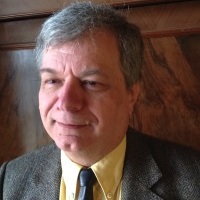
by David Levinson
Samuel Taylor Coleridge, The Rime of the Ancient Mariner
Northwest to Alaska
Almost from the moment Europeans discovered the Americas, they’ve been looking for a sea route to Asia across the top of the continent. Dubbed the Northwest Passage by the English (because they were trying to travel west), the name stuck, and the route has been of interest ever since. The McClure Arctic expedition showed there was a sea route in 1850, though much of it was blocked by ice, and the journey was partially completed by sledge. Roald Amundsen became the first to go from Atlantic to Pacific entirely by ship between 1903 and 1906.
When oil was discovered last year at Prudhoe Bay on the Arctic coast of Alaska, attention turned once again to the Northwest Passage. A pipeline from Prudhoe Bay to a mostly ice-free port like Anchorage or Valdez faces a number of technological and legal challenges, so, even though planning is well underway and several hundred miles of pipe have already been ordered, oil companies are taking a look at the viability of shipping through the Northwest Passage.
Enter the SS Manhattan, an oil tanker owned and operated by the Esso company; she’s also the largest merchant vessel registered in the United States. She has been refitted with an icebreaker bow by the Finnish shipbuilder Wärtsilä, which built a huge ice tank to help optimize the design.
 The SS Manhattan breaking through the ice of the Northwest Passage.
The SS Manhattan breaking through the ice of the Northwest Passage.
The Manhattan left Pennsylvania in August and sailed for Alaska under the command of Captain Roger A. Steward. Sea ice in the M’Clure Strait forced her take a more southerly route through the Canadian Arctic archipelago. After she reached Prudhoe Bay, a token barrel of crude oil was placed aboard, and the return voyage began. The ship cleared the Passage on September 14th, becoming the first commercial vessel to make the transit.
Is the Northwest Passage now open for commerce? Maybe, maybe not. The Manhattan required the support of several American and Canadian coast guard icebreakers to get through. Also the legal challenges a pipeline faces may be nothing compared to the sea route. Canada considers all waters in the Arctic archipelago to be internal waters, not an international shipping lane. In fact, at one point a group of Inuit hunters stopped the ship and demanded the captain request permission to pass through Canadian territory. He did so, and permission was granted.
So there are legal problems. Whether the Passage can be used year-round is also unknown. There’s talk of sending another ship this winter to see if the way is open then. Time will tell, but I’m betting on the pipeline.
Involving, but avoiding, calamity
There’s something about a shipwreck that seems to resonate with people. From The Wreck of the Hesperus (the bane of schoolchildren for nearly a century) to A Night to Remember (something of a disaster itself at the box office), wrecks are found all through popular entertainment. Science fiction is no exception, although the ships are usually in space. This month’s Venture offers no fewer than three ship related disasters, not to mention a plane crash and a global disaster.
Thankfully, the issue itself is not a disaster. Quite the contrary, actually.
 Art by Tanner
Art by Tanner
This issue’s cover is a slight improvement over the last. It’s recognizably science fiction, and there’s a second color.
Continue reading [October 20, 1969] There was a ship (November 1969 Venture)

![[October 20, 1969] There was a ship (November 1969 <i>Venture</i>)](https://galacticjourney.org/wp-content/uploads/2024/10/Venture-1969-11-Cover-480x372.jpg)
![[Sep. 30, 1969] Decisions, decisions (October 1969 <i>Analog</i>)](https://galacticjourney.org/wp-content/uploads/2024/09/690930cover-651x372.jpg)


.jpg)

